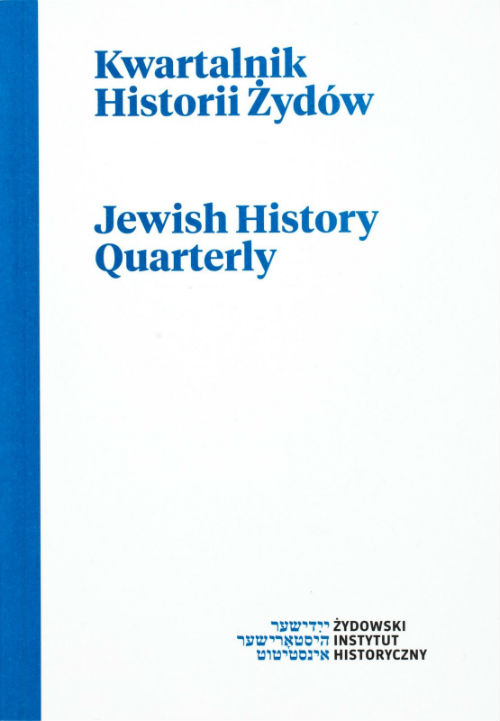Ludność żydowska w wielkorządach krakowskich w II poł. XVIII w.
Jewish Population in Kraków Royal Estates in 2nd Half of 18th Century
Author(s): Przemysław ZarubinSubject(s): History
Published by: Żydowski Instytut Historyczny
Keywords: Kraków; Kazimierz; royal domain administration; Kraków governors; tenants
Summary/Abstract: The operation of a separate institution administering the royal treasury dates back to the times of the Saxon kings, and specifically to the year 1710. Shortly afterwards, in 1717, an instruction for the royal fiscal court was issued. During the reign of King Stanisław August Poniatowski the royal estate was managed by a collective body called the Economic Commission. The Wawel Royal Castle, managed by a governor was the main center of the King’s power in his royal estates. Inside the Kraków agglomeration the Jews who were subject to administrative jurisdiction by Kraków governors resided outside the Jewish town at Kazimierz, the Christian town of Kazimierz, the town of Kleparz, Governor’s Smoleńsk jurydyka, Podzamcze and Łobzów. In the Jewish Town, the number of Jews was estimated at 3,500 by the office of Kraków voivode in 1787. Earlier censuses of the Jewish population most likely showed lower than actual figures, e.g., according to the poll tax tariff from 1781, the number of Jews in the Jewish town was put at 1887. The governor exercised jurisdiction over the Jews inhabiting the Jewish Town at Kazimierz. As a rule they reviewed appeals from the verdicts of magistrates courts for Kazimierz and Kleparz, resolving civil and business disputes between Jews and the burghers. In the first instance the governor exercised jurisdiction over the citizens inhabiting the jurydykas supervised by him, including Jewish tenants. For the inhabitants of Kraków and surrounding areas, the most shocking criminal case heard by that court during that time was the unsuccessful attempt by the Jew Marek Mortka to murder Apolonia Siedlecka. The Olkusz court of first instance made up of the mayor and a jury sentenced the Jew to death in 1787. The governor’s court ordered the Kazimierz magistrates to execute the decree. During the Four-Year Sejm, the kehilla, citing the poor shape of the community’s budget, submitted various motions and memorials, asking to have the imposts lifted or decreased. The Jews were pleading with the governor to intervene on their behalf with the king. The Jews’ role in the economy was particularly pronounced as tenants of breweries, inns and mills owned by the regional authorities. The activity of Jewish tenants of royal property encountered opposition from the guilds, especially that of the Kraków brewers. They protested against alleged failure of the Jewish innkeepers to respect the guild’s propination privileges. During the Four-Year Sejm and the drafting of new constitutions for royal towns the Kazimierz kehilla, facing the attempts of the neighbouring Kraków to end the autonomy of Kazimierz and Kleparz, presumably regarded the Kraków governor as an advocate of its interest and guarantor or the preservation of the existing rights.
Journal: Kwartalnik Historii Żydów
- Issue Year: 243/2012
- Issue No: 03
- Page Range: 339-359
- Page Count: 21
- Language: Polish

